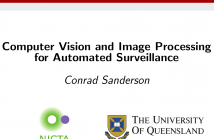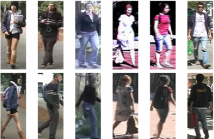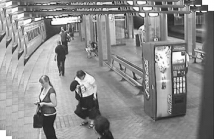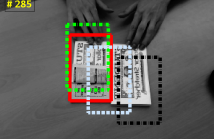
Presentation slides covering:
- robust foreground detection / background subtraction via patch-based analysis
- person re-identification based on representations on Riemannian manifolds
- robust object tracking via Grassmann manifolds
- adapting the lessons from big data to computer vision
- future paradigm shifts: computer vision based on networks of neurosynaptic cores
- Categories:
 42 Views
42 Views
Slides from the Tutorial on Riemannian Geometry in Computer Vision, presented at the Asian Conference on Computer Vision (ACCV), Singapore, 2014.
The slides show (1) how objects can be interpreted as points on Riemannian and Grassmann manifolds, and (2) various distance measures on manifolds. Demonstrates usefulness of manifold techniques in applications such as object tracking and person re-identification.
- Categories:
 61 Views
61 Views
For the purposes of foreground estimation, the true background model is unavailable in many practical circumstances and needs to be estimated from cluttered image sequences. We propose a sequential technique for static background estimation in such conditions, with low computational and memory requirements. Image sequences are analysed on a block-by-block basis. For each block location a representative set is maintained which contains distinct blocks obtained along its temporal line.
- Categories:
 5 Views
5 Views
We propose an adaptive tracking algorithm where the object is modelled as a continuously updated bag of affine subspaces, with each subspace constructed from the object's appearance over several consecutive frames. In contrast to linear subspaces, affine subspaces explicitly model the origin of subspaces. Furthermore, instead of using a brittle point-to-subspace distance during the search for the object in a new frame, we propose to use a subspace-to-subspace distance by representing candidate image areas also as affine subspaces.
report.pdf
- Categories:
 10 Views
10 Views